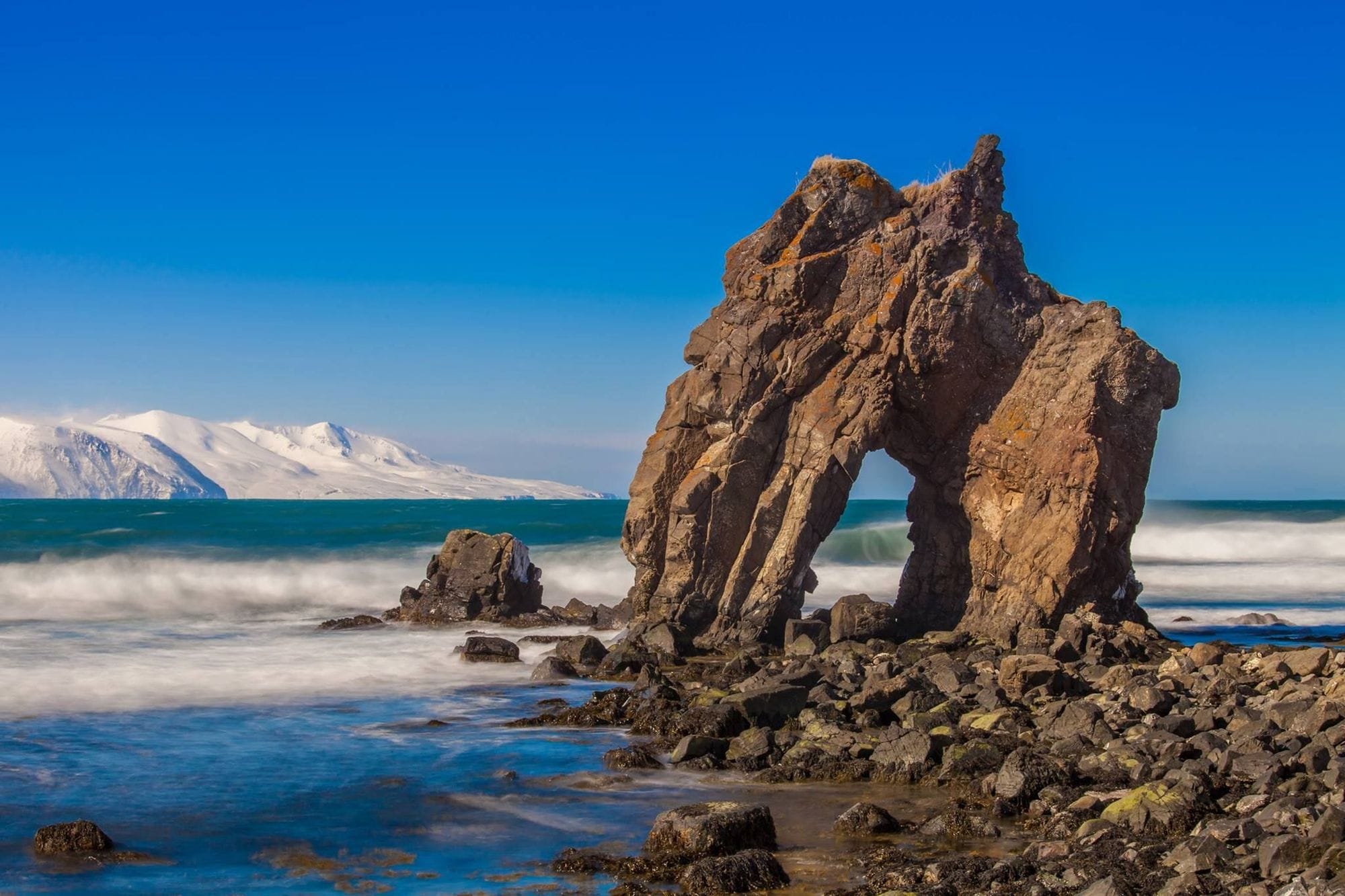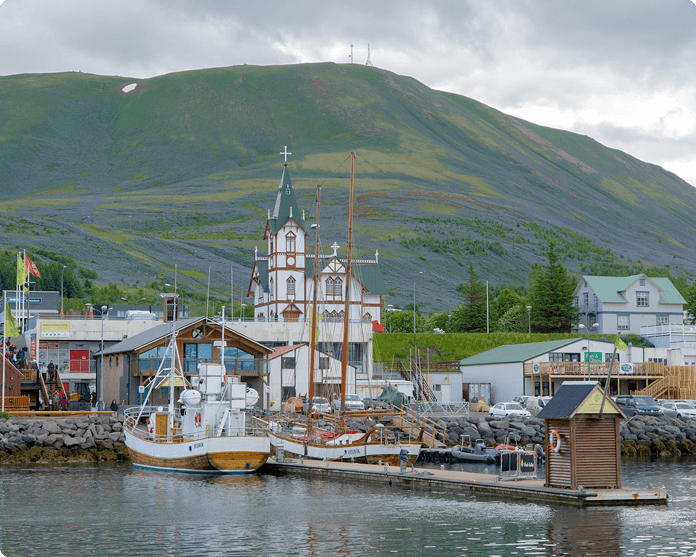Visit Húsavík
From festivals and art exhibitions to community gatherings, find out what's happening in town and join us!
Unwind by the Sea
Our travel planning guide offers accommodations, travel info, suggested itineraries, and seasonal tips. Explore local tours, an interactive map, road conditions, weather, emergency contacts and practical info—all in one place.

The Diamond Circle
The Diamond Circle route connects some of Iceland’s most iconic natural wonders—including Europe’s most powerful waterfall Dettifoss, the muddy hot springs of Lake Mývatn, the whale-rich waters of Skjálfandi Bay by Húsavík, and the dramatic hiking paths of Jökulsárgljúfur Canyon.
- HÚSAVÍK
Húsavík is the Heart of the Diamond Circle, explore waterfalls, lava fields, canyons, and geothermal wonders – all within a short drive
Unwind by the Sea
Discover the harbor-town charm with beautiful sea views, colorful houses and slow-paced relaxation. Húsavík is a haven for whale watching enthusiasts, boasting the highest sighting rate in Iceland. Also a perfect base for the Diamond Circle. After a day on the road - come back to what really matters: real food, cozy beds, and genuine warmth.

Discover the Magic of Eurovision in Húsavík
Are you a Eurovision fan or a lover of unforgettable movie moments? Step into the charming town of Húsavík, the heart of the Icelandic scenery that brought "Eurovision Song Contest: The Story of Fire Saga" to life. Join us on an exclusive, behind-the-scenes adventure that celebrates the iconic film, its stunning locations, and the spirit of Eurovision!

